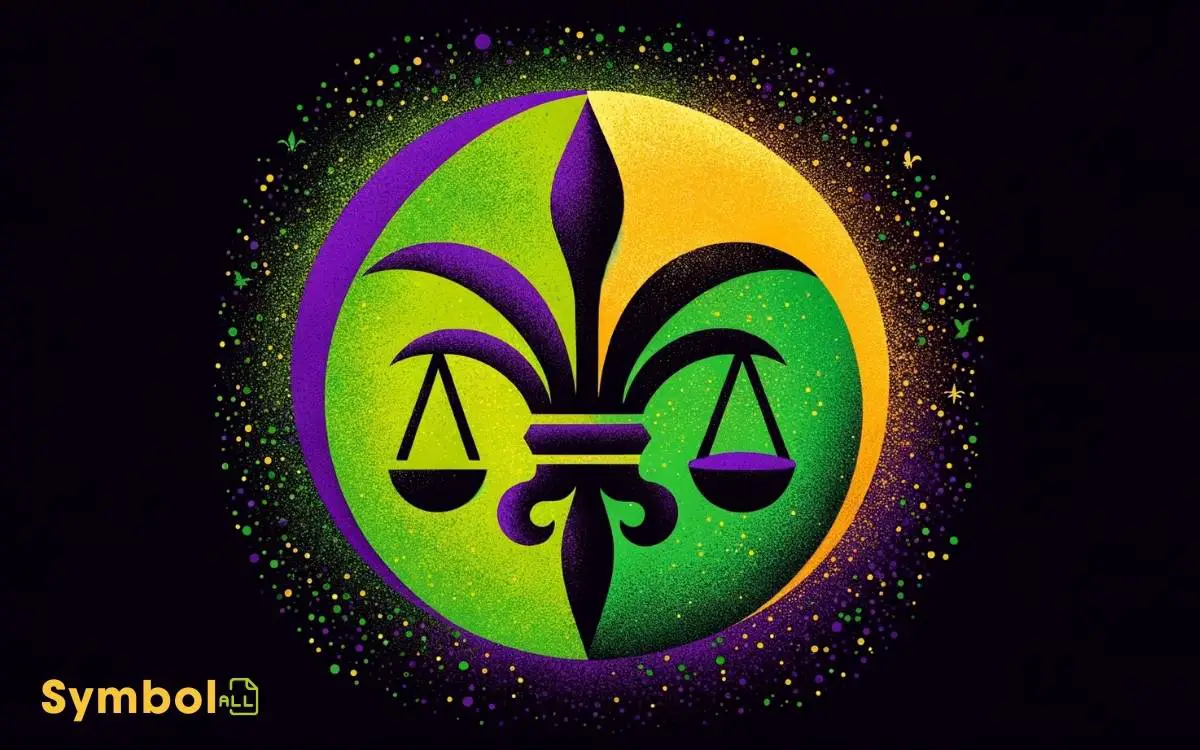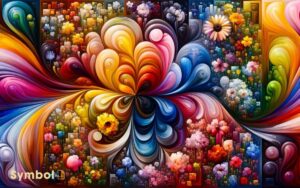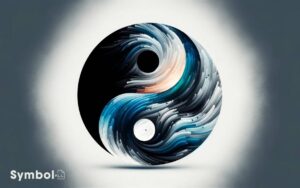What Do the Colors of Mardi Gras Symbolize? Explored!
The colors of Mardi Gras—purple, green, and gold—carry rich symbolism. You’ll find purple expressing justice and nobility, a reflection of its royal connotations.
Green stands for faith and renewal, echoing the festival’s springtime roots and themes of growth.
Gold, on the other hand, symbolizes power and wealth, illuminating the festivities with its bright hue.
These colors represent more than aesthetic choices; they are deeply woven into the fabric of Mardi Gras, embodying the celebration’s historical depth and cultural significance. As you explore further, you’ll uncover the intricate web of meanings behind these vibrant hues.

Key Takeaway
The Origin of Mardi Gras
The origins of Mardi Gras can be traced back to medieval Europe, where it evolved from ancient Roman festivals and Christian traditions, establishing a rich tapestry of cultural celebration that has endured and transformed across centuries.
You’ll find that its roots are deeply embedded in the pagan celebrations of spring and fertility, especially Lupercalia and Saturnalia, which were seamlessly woven into the fabric of Christian customs, marking the beginning of Lent.
This syncretism allowed Mardi Gras to flourish, embodying a period of indulgence and revelry before the solemnity of Lent’s 40 days of fasting and penitence.
As it spread, each culture infused it with its unique flavors, yet the essence of merrymaking and the prelude to a period of reflection remained constant.
Significance of Purple
Exploring the vibrant tapestry of Mardi Gras requires an understanding of its emblematic colors, starting with purple, which signifies justice and is deeply rooted in the event’s historical and cultural significance.
This hue, a symbol of fairness and integrity, reflects the core values that Mardi Gras celebrations aim to uphold.
The choice of purple, historically associated with royalty and nobility, underscores the democratic ethos of Mardi Gras, where everyone is invited to partake regardless of social standing.
It’s a reminder that justice transcends socioeconomic boundaries, promoting a sense of unity and equality among participants.
As you immerse yourself in the festivities, the purple around you isn’t just a color; it’s a powerful statement about the societal ideals that Mardi Gras champions.
Significance of Green
You’ll find that green, one of Mardi Gras‘s iconic colors, carries profound meanings beyond mere decoration. It stands as a symbol of faith, offering a visual narrative that intertwines spiritual beliefs with the vibrant festivities.
Additionally, its representation of nature’s resonance and fertility embeds a layer of cultural significance into the fabric of Mardi Gras, reflecting themes of renewal and growth.
Green: Symbol of Faith
In analyzing Mardi Gras colors, green stands as a vibrant symbol of faith, imbuing the festivities with a deeper, often overlooked, spiritual dimension.
This significance isn’t merely superficial; it roots deeply in historical traditions and religious underpinnings that trace back to the origins of Mardi Gras itself.
The choice of green, specifically, to represent faith within the triad of Mardi Gras colors (purple, gold, and green) isn’t arbitrary. It reflects a deliberate intention to weave the spiritual into the fabric of celebration.
By embracing green, revelers aren’t just participating in a festivity; they’re engaging in a tradition that honors the unseen, steadfast aspect of faith.
This color’s role in Mardi Gras serves as a reminder of the enduring presence of belief amidst the ephemeral joys of life.
Natures Resonance in Green
Beyond its spiritual symbolism, green also mirrors the vibrancy and renewal found in nature, further enriching Mardi Gras’s palette with layers of meaning.
This color’s significance is deeply embedded in the natural world, embodying the essence of life and growth.
In the context of Mardi Gras, green transcends mere decoration, invoking the rejuvenating spirit of spring. It symbolizes the inexorable cycle of life, where renewal and rebirth are perennial themes.
As you explore the festival’s vivid display, green serves as a reminder of nature’s resilience and bounty.
It’s a visual representation of the natural balance, suggesting that amidst the revelry, there exists a profound connection to the earth’s perpetual regeneration.
This resonance with nature elevates the celebratory atmosphere, imbuing it with a sense of harmony and continuity.
Fertility Represented by Green
Green’s representation of fertility in Mardi Gras symbolism extends beyond mere color, embodying the profound connection between celebration and the cycle of life and growth.
This hue, vibrant and full of life, isn’t chosen at random. It stands as a confirmation to renewal, mirroring the natural world’s perennial rebirth.
In the context of Mardi Gras, green transcends decorative purposes, weaving itself into the fabric of the festival’s deeper meanings. It invites participants to explore on beginnings anew, encouraging thoughts of abundance and prosperity.
As you explore into the festivities, green’s presence is a constant reminder of the earth’s fecundity, offering a symbolic link to the generative forces that sustain us.
Therefore, green isn’t merely a color; it’s a celebration of life’s perpetual resurgence.
Significance of Gold
Gold, representing power and wealth, imbues Mardi Gras celebrations with a sense of royal majesty and timeless prosperity.
This color doesn’t merely serve as a visual spectacle; it encapsulates the pursuit of success and the embodiment of societal status.
Its inclusion in the Mardi Gras palette underscores the festival’s historical roots in celebrating abundance and the human desire for achievement.
| Symbolism | Implication |
|---|---|
| Power | Authority, Control |
| Wealth | Prosperity, Riches |
| Royal Majesty | Grandeur, Dignity |
| Timeless Prosperity | Enduring Success |
Historical Context of the Colors
You’ll find that the Mardi Gras colors didn’t randomly earn their status; their origin is steeped in a rich history that reveals much about the cultural and societal values of the time.
Each color carries with it a tapestry of symbolic meanings that have been carefully disclosed and interpreted over the years.
As we explore this evolution, we uncover how shifts in societal norms and cultural influences have shaped the celebration’s visual identity, marking a fascinating journey from past to present.
Origin of Color Choice
The choice of Mardi Gras colors, steeped in rich historical significance, reflects a deliberate selection by the event’s early organizers to symbolize justice, power, and faith.
This decision traces back to the late 19th century, specifically to the 1872 visit of the Russian Grand Duke Alexis Romanoff to New Orleans.
Influenced by the grand duke’s familial colors, local Mardi Gras organizers adopted purple, green, and gold as the official colors.
This adoption wasn’t arbitrary but a thoughtful reflection of the event’s evolving identity and its desire to embed deeper meanings within its celebratory veneer.
The choice underscored a connection to noble lineage while also aiming to infuse the carnival with a sense of purpose beyond mere festivity.
Symbolic Meanings Unveiled
Understanding the historical context of Mardi Gras colors reveals how each hue encapsulates distinct cultural values and societal aspirations, extending beyond their aesthetic appeal.
These colors were chosen for their symbolic significance, deeply rooted in the celebration’s origins and the broader cultural narrative of the regions celebrating Mardi Gras.
- Purple: Symbolizes justice, embodying the fair and equitable principles that societies endeavor to uphold.
- Green: Represents faith, reflecting the trust and belief communities place in one another and in higher powers.
- Gold: Denotes power, capturing the essence of authority, leadership, and the relentless pursuit of excellence.
- White: Although less commonly associated, signifies purity and unity, highlighting the intrinsic desire for peace and harmony within the community.
Each color, therefore, plays a pivotal role in conveying the multifaceted cultural ethos of Mardi Gras festivities.
Evolution Over Time
Over time, Mardi Gras colors have undergone a fascinating evolution, reflecting shifts in societal values, cultural exchanges, and historical events that have shaped their significance.
Initially, the selection of purple, green, and gold was rooted in their representation of justice, faith, and power respectively.
This choice was influenced by the cultural milieu of the late 19th century, intertwining European traditions with local New Orleans customs.
As Mardi Gras evolved from a French Catholic celebration to a widespread festival, these colors acquired deeper, more diverse meanings, mirroring changes in societal dynamics and cultural interactions.
The adaptive nature of Mardi Gras colors showcases their capability to encapsulate the evolving ethos of the celebration, highlighting a dynamic interplay between tradition and contemporary societal trends.
Cultural Impact of Mardi Gras
Mardi Gras annually transforms cities around the world, prominently New Orleans, into epicenters of cultural expression, community engagement, and economic activity, reflecting its profound impact on societal norms and practices.
This festival’s cultural impact is multifaceted, deeply engrained in the social fabric and traditions of communities it touches.
- Cultural Preservation and Promotion: It acts as a conduit for the perpetuation and celebration of local customs, music, and cuisine.
- Community Cohesion: Mardi Gras fosters a sense of belonging and togetherness, bridging societal divides.
- Economic Boost: The influx of tourists revitalizes local economies, benefiting businesses and artisans.
- Artistic Expression: It provides a platform for artists to showcase their talents through vibrant parades and costumes, promoting creativity and innovation.
These elements collectively underscore Mardi Gras’ role in shaping cultural identities and economic landscapes.
The Role of Royalty
Within the vibrant celebrations of Mardi Gras, the role of royalty embodies a rich tapestry of tradition and symbolism, deeply woven into the festival’s cultural fabric.
Kings, queens, and their courts aren’t mere figureheads; they’re central to Mardi Gras’ pageantry, symbolizing societal ideals of nobility, generosity, and leadership.
Historically, these figures are selected with great care, often to honor community members who embody the festival’s spirit of unity and revelry.
Their coronation, a highlight of the celebration, isn’t just ceremonial; it represents the temporary establishment of a domain where joy, rather than the mundane concerns of daily life, reigns supreme.
This tradition underscores the transformative power of Mardi Gras, inviting participants to momentarily step into a world ruled by festivity and camaraderie.
Symbols and Their Meanings
Numerous symbols permeate the Mardi Gras festivities, each carrying a distinct significance that enriches the cultural and historical tapestry of the celebration.
You’ll discover that these symbols aren’t just for show; they’re deeply rooted in tradition and convey a wealth of meaning.
- The Fleur-de-lis: Symbolizing purity and the Holy Trinity, this emblem is also tied to French heritage, reflecting the origins of Mardi Gras in Louisiana.
- Masks: These represent anonymity and freedom, allowing revelers to explore societal constraints and celebrate with abandon.
- King Cakes: Encapsulating the Epiphany, these cakes honor the three wise men, with the hidden baby figurine bestowing luck upon the finder.
- Beads: Once tokens of good fortune and health, beads have evolved into a quintessential Mardi Gras accessory, embodying the spirit of gift-giving and celebration.
Each element invites you to investigate further into the festivities, uncovering layers of history and tradition intertwined with jubilant celebration.
Incorporating Colors in Festivities
Building on the rich tapestry of symbols discussed, the incorporation of specific colors in Mardi Gras festivities further deepens the celebration’s cultural and historical significance.
You’ll find that each hue—purple, green, and gold—doesn’t just add vibrancy; it imbues the event with layers of meaning.
- Purple stands for justice, a nod to the fair and equitable spirit intended to govern the revelry.
- Green symbolizes faith, reflecting the trust and belief in community that underpins the festival’s ethos.
- Gold represents power, highlighting the strength and resilience of a culture that has weathered adversity.
When you see these colors adorning streets, costumes, and floats, you’re witnessing a living tableau of values that have sustained Mardi Gras through centuries.
Modern Interpretations
In recent years, the traditional significance of Mardi Gras colors has evolved, reflecting broader societal changes and incorporating new layers of meaning.
You’ll find that:
- Purple now embodies not just justice but also signifies movements for equality and inclusivity.
- Green, traditionally symbolizing faith, has expanded to represent environmental awareness and a call for sustainability.
- Gold, while still signaling power, increasingly symbolizes the fight against poverty and the quest for social justice.
The introduction of additional colors in some celebrations reflects the diversity and inclusivity of modern society, challenging the conventional color palette.
These adaptations of Mardi Gras colors express a collective societal shift towards more profound, socially aware interpretations.
They mirror the community’s evolving values, emphasizing inclusivity, environmental consciousness, and social justice.
Preserving Tradition
While modern interpretations of Mardi Gras colors embrace evolving societal values, the preservation of tradition remains an important aspect of the celebration, ensuring a tangible link to its historical roots.
You’ll find that each color not only carries a specific meaning but also represents a continuous thread through generations, honoring the origins of this vibrant festival.
| Color | Traditional Meaning | Modern Significance |
|---|---|---|
| Purple | Justice | Empowerment and Spirituality |
| Green | Faith | Growth and Harmony |
| Gold | Power | Optimism and Success |
This table illustrates how the core values associated with Mardi Gras colors have been preserved while allowing for contemporary interpretations.
By understanding these nuances, you’re connecting with both the past and the present, celebrating a history that’s as colorful as the festival itself.
Conclusion
To wrap up, the vibrant hues of Mardi Gras—purple, green, and gold—aren’t just a feast for the eyes; they’re steeped in deep historical and cultural significance.
Purple symbolizes justice, green for faith, and gold for power, each color weaving a rich tapestry of meaning into the fabric of the celebration. These vibrant hues come together to tell a story of unity, tradition, and shared values, creating an atmosphere that is as meaningful as it is festive. Much like the colors of the rainbow meaning inclusivity and harmony, these chosen shades remind us that every element plays a part in the larger narrative. Together, they transform the celebration into a dynamic display of culture and spirit.
As you revel in the festivities, remember you’re not just part of a party, but a living tradition. By incorporating these colors, you’re keeping the flame of heritage burning bright, ensuring that Mardi Gras remains not just a drop in the ocean of cultural celebrations, but a beacon of continuity and communal identity.






